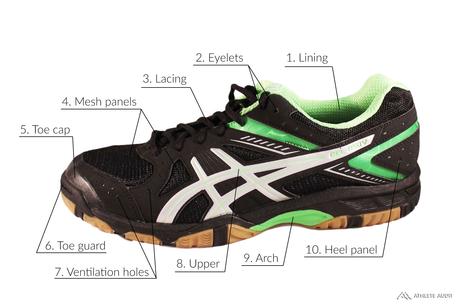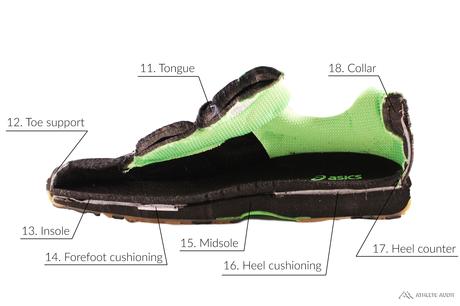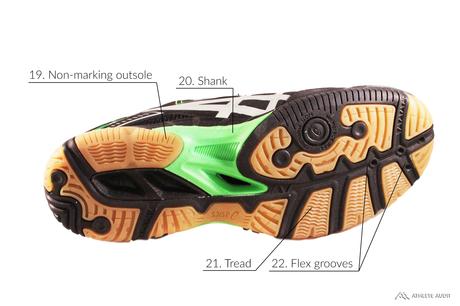Parts of a Volleyball Shoe



- Lining – A comfortable sock-like fabric sits on the inside of the shoe, covering the foot
- Eyelets – Holes on either side of the tongue that guides the laces in place
- Lacing – Traditional laces help provide the most adjustment in fit
- Mesh panels – Some volleyball shoes feature mesh panels that make the shoe more breathable
- Toe cap – Often reinforced for added durability, since most of the sport is played on the toes
- Toe guard – A rubber toe guard helps to improve durability while making it easier to stay on the toes
- Ventilation holes – Helps to add ventilation to get rid of moisture
- Upper – Often made of a tough material such as leather or synthetic leather for lateral stability
- Arch – The middle area of the shoe. Some volleyball shoes offer arch support
- Heel panel – The fabric covering the heel of the shoe
- Tongue – A well-padded tongue helps to increase comfort, fit, and protection
- Toe support – Some volleyball shoes have additional toe support in the form of a plastic insert
- Insole – The footbed of the shoe, adds comfort and orthotic support. Some can be removed
- Forefoot cushioning – Some shoes make use of forefoot cushioning for harsh landings on the forefoot
- Midsole – Lies between the insole and outsole, provides cushioning and shock absorption. Thicker in the heel like a running shoe
- Heel cushioning – Cushioning in the heel can be added for harsh landings on the heel area
- Heel counter – A rigid plastic insert in the back of the shoe that provides structural support for the heel
- Collar – A nicely padded collar helps to improve comfort and fit
- Non-marking outsole – The bottom of the shoe that provides traction. A special non-marking rubber helps to provide superior traction without streaking the court
- Shank – Some volleyball shoes make use of a shank, which is an insert between the insole and outsole that provides support
- Tread – A herringbone tread pattern provides a ton of grip on slick volleyball courts
- Flex grooves – Helps to add flexibility to the shoe, which is very important since volleyball is such a dynamic sport

